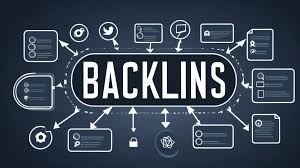Solving Store-Level Issues Through Smarter Retail Operations Management
Running multiple retail locations means juggling dozens of daily variables—from team attendance and sales execution to customer traffic and in-store coverage. Unfortunately, store-level issues often go unnoticed until they impact the bottom line. That’s where smart retail operations management comes in.
With the right systems in place, retailers can proactively identify and solve in-store problems like buddy punching, staff inefficiencies, and missed customer engagement—before they turn into costly setbacks.
Let’s walk through how smarter retail operations management helps solve common store-level issues and keeps performance on track.
1. Problem: Time Theft and Buddy Punching
Buddy punching is one of the most common sources of lost productivity in retail. When employees clock in or out for each other, labor hours are inflated and accountability disappears.
The Smart Fix:
Modern retail operations management tools can stop buddy punching by:
- Using biometric or facial recognition systems
- Verifying clock-ins via GPS or store-specific devices
- Sending real-time alerts for unusual attendance patterns
This ensures that only the scheduled employee can log time—saving hours of false labor across locations.
2. Problem: Late Openings or Early Closings
When a store opens late or closes early, it doesn’t just affect customers—it hurts sales, brand perception, and team discipline.
The Smart Fix:
Use retail operations management systems that track and alert for:
- Scheduled vs. actual open/close times
- Gaps in employee presence during operating hours
- Missed opportunities due to unattended stores
With this data, district leaders can follow up quickly, coach effectively, and prevent repeat issues.
3. Problem: Poor Floor Coverage During Peak Hours
A well-staffed store still fails if employees aren’t positioned to help customers during peak times. Whether it’s break overlaps or unclear floor assignments, poor coverage leads to lost sales.
The Smart Fix:
Integrate traffic data with your retail operations management platform to:
- Align staffing levels with peak customer flow
- Monitor idle time vs. active customer engagement
- Alert managers when the sales floor is understaffed
By using customer-only traffic data, retailers can ensure reps are present and performing when it matters most.
4. Problem: Inconsistent Store Execution
Different locations often operate with different standards—even under the same brand. This inconsistency leads to uneven customer experiences and unreliable performance comparisons.
The Smart Fix:
Centralize store performance tracking through a unified retail operations management system to:
- Compare performance using standard KPIs
- Highlight stores with recurring issues (e.g., high idle time, late openings)
- Share best practices from high-performing locations
When expectations are clear and data is consistent, execution across stores improves.
5. Problem: Missed Sales Opportunities Due to Unattended Customers
Every customer that enters your store and leaves without being helped is a missed chance to convert. Without visibility, these moments slip through the cracks.
The Smart Fix:
Pair People Counter technology with employee monitoring to:
- Track how many customers go unattended
- Identify reps who consistently miss engagements
- Optimize floor assignments and coverage plans
This gives managers the data they need to coach based on facts—not assumptions.
6. Problem: Difficulty Identifying Underperforming Reps
In many stores, performance tracking is based on sales numbers alone. But that doesn’t tell the full story—especially when reps work different shifts or serve different traffic levels.
The Smart Fix:
Smarter retail operations management goes beyond sales data by analyzing:
- Conversion rates vs. traffic volume
- Average customer interaction times
- Time spent idle vs. time assisting
This helps retailers identify reps who are underutilized, overwhelmed, or simply need support.
7. Problem: Reactive Instead of Proactive Management
Waiting for weekly reports or customer complaints is no way to manage a store. Real-time issues require real-time solutions.
The Smart Fix:
Equip your team with daily alerts and automated reporting through your retail operations management platform to:
- Address attendance gaps, idle time, or early departures
- Respond quickly to missed KPIs or compliance violations
- Keep teams focused with live feedback loops
Smarter tools help managers lead proactively—not just react to what’s already gone wrong.
Conclusion: Smarter Management, Better Outcomes
Retail stores operate in real time—your operations strategy should, too. By solving issues like buddy punching, poor coverage, and inconsistent execution through smart retail operations management, retailers gain more control without adding complexity.
With better visibility, stronger accountability, and data that drives daily action, store-level issues become manageable—and preventable.
Smarter systems don’t just monitor—they improve how stores run, how teams work, and how customers experience your brand.
FAQs: Buddy Punching & Retail Operations Management
Q1: What makes buddy punching hard to catch without technology?
Without systems in place, buddy punching often goes unnoticed because it appears as a normal clock-in. There’s no visual or location-based confirmation of the employee’s presence.
Q2: How does a retail operations management system improve daily store performance?
It automates attendance tracking, monitors floor coverage, tracks idle time, and provides real-time alerts for any operational gaps—giving managers tools to respond fast.
Q3: Can People Counters help prevent missed sales?
Yes. People Counter tools show how many customers came in, and paired with staff engagement data, they reveal when customers go unhelped—leading to direct action.
Q4: Do these systems replace managers?
No. They empower managers by giving them accurate data and timely alerts so they can focus on coaching and leadership instead of manual tracking.
Q5: How quickly can I see improvements after using these tools?
Most retailers see improvement in punctuality, rep accountability, and store coverage within the first month of implementing smarter tracking and reporting systems.







